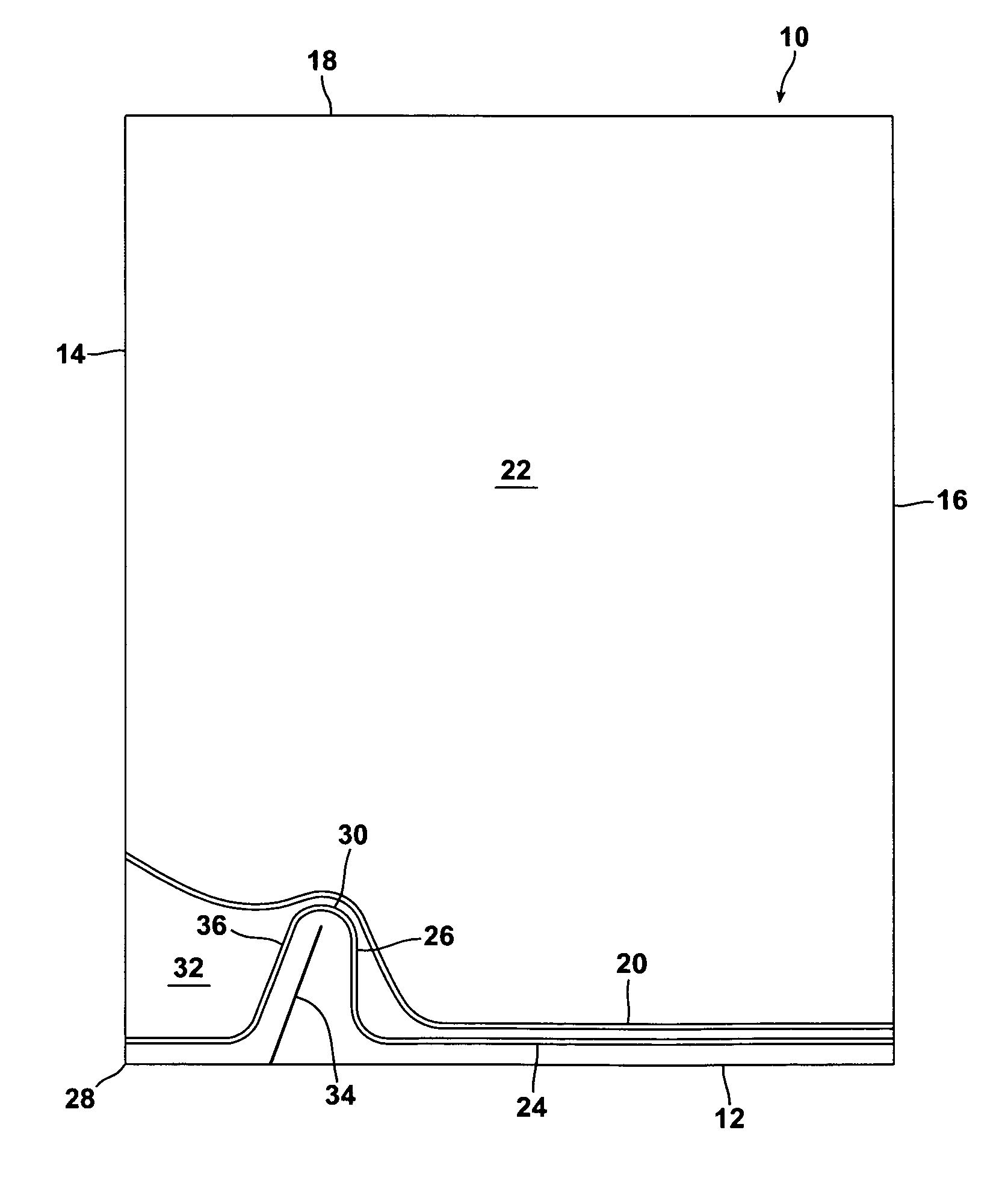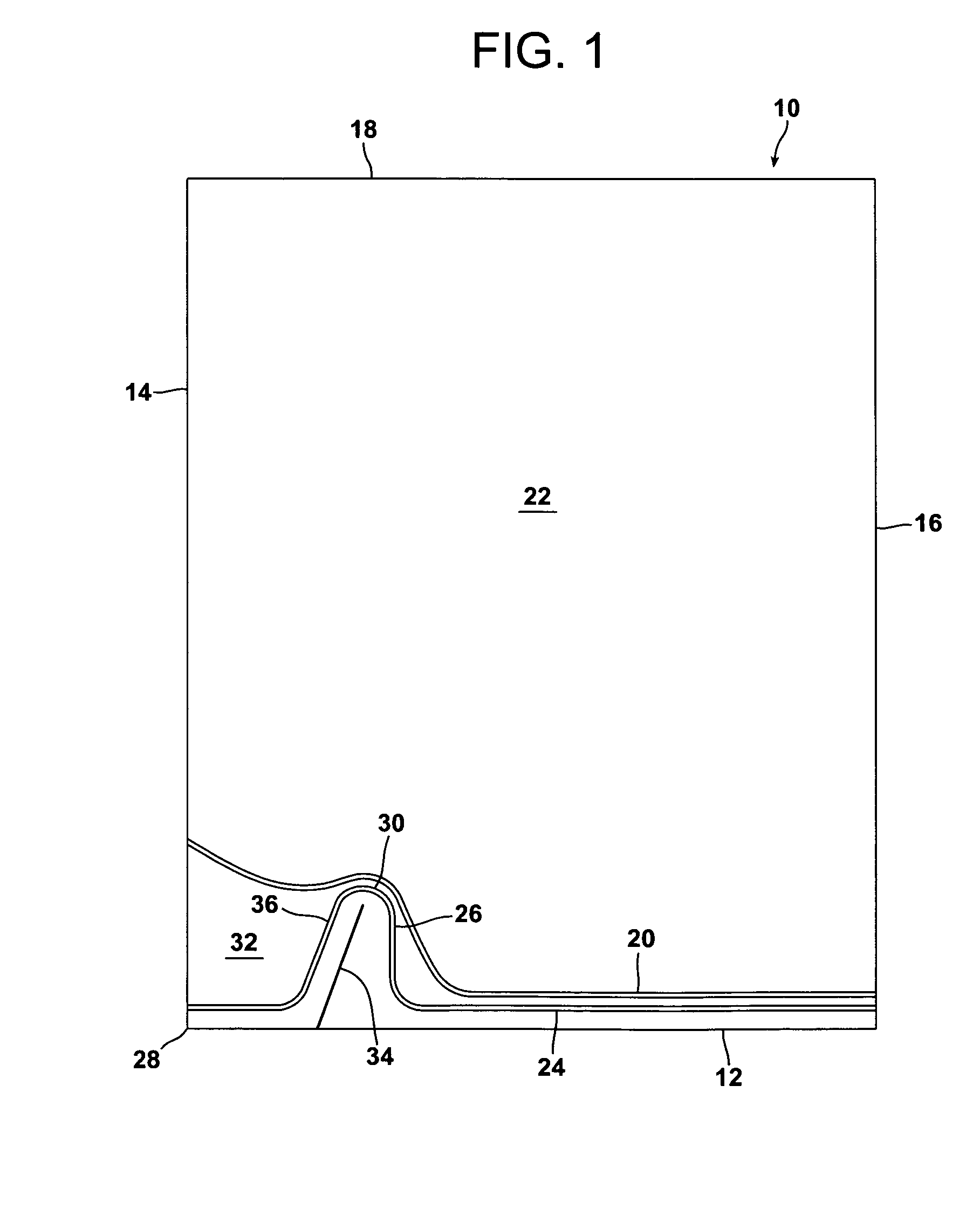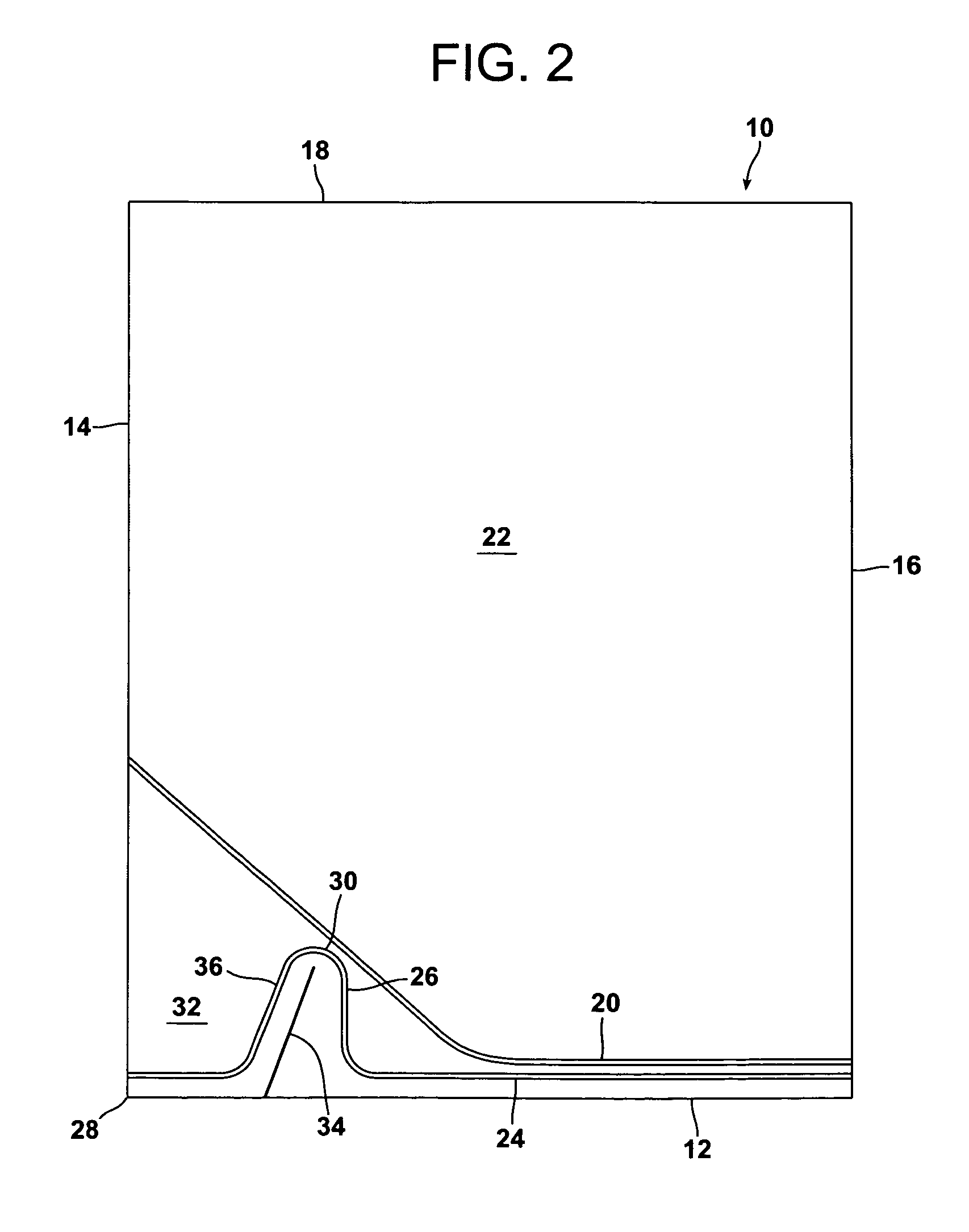Bag of a heat-shrinkable gas-barrier thermoplastic film
a thermoplastic film and gas barrier technology, applied in the field of bags of heat shrinkable gas barriers and thermoplastic films, can solve the problems of reducing the commercial value of the contents, difficult to tear the package, and conventional methods have their own limitations, so as to minimise excess material, minimise excess material, and minimise excess material.
- Summary
- Abstract
- Description
- Claims
- Application Information
AI Technical Summary
Benefits of technology
Problems solved by technology
Method used
Image
Examples
Embodiment Construction
[0046]Referring to FIG. 1, a bag 10 of a heat shrinkable gas-barrier, thermoplastic film for packaging one or a plurality of items is provided, the bag comprising a bottom edge 12, two side edges 14 and 16 and an open mouth 18 for the introduction of the item or items to be packaged between opposed film portions.
[0047]The bottom of the bag is closed by a first heat seal 20 adjacent the bottom edge 12 connecting the two side edges 14 and 16. The first seal 20 defines with the open mouth 18 and the side edges 14 and 16 an area 22 of the bag for receiving the item or items to be packaged via the open mouth.
[0048]A second heat seal 24 connects the side edges 14 and 16 between the bottom edge 12 and the first seal 20. The majority of the second seal 24 extends at least substantially parallel to the bottom edge 12, but the second seal has a shaped portion 26 adjacent a corner 28 of the bag defined by the bottom edge 12 and the side edge 14. The shaped portion 26 projects towards the open ...
PUM
| Property | Measurement | Unit |
|---|---|---|
| distance | aaaaa | aaaaa |
| height | aaaaa | aaaaa |
| distance | aaaaa | aaaaa |
Abstract
Description
Claims
Application Information
 Login to View More
Login to View More - R&D
- Intellectual Property
- Life Sciences
- Materials
- Tech Scout
- Unparalleled Data Quality
- Higher Quality Content
- 60% Fewer Hallucinations
Browse by: Latest US Patents, China's latest patents, Technical Efficacy Thesaurus, Application Domain, Technology Topic, Popular Technical Reports.
© 2025 PatSnap. All rights reserved.Legal|Privacy policy|Modern Slavery Act Transparency Statement|Sitemap|About US| Contact US: help@patsnap.com



